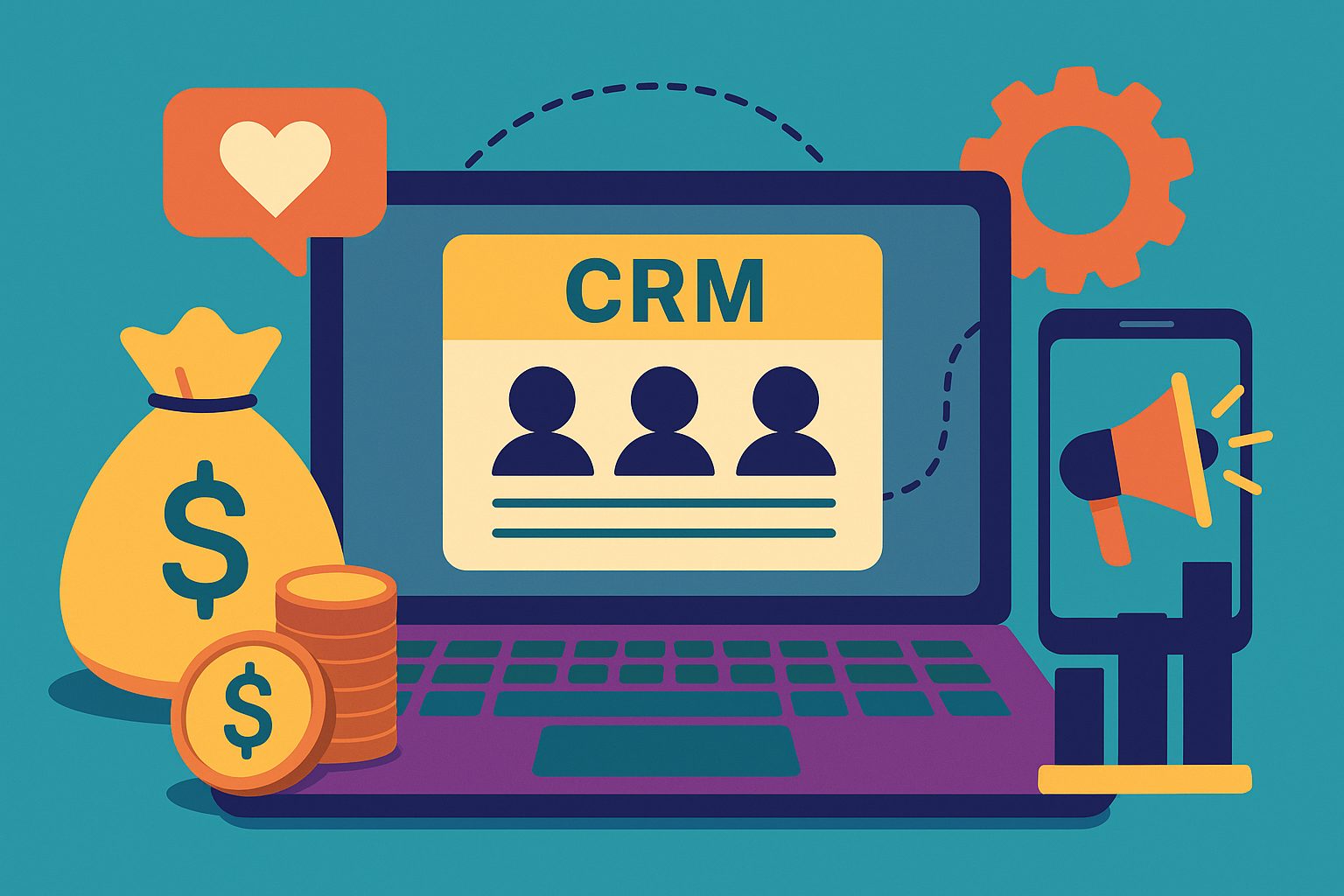Why CRM Matters More Than Ever for Creators
When it comes to launching a crowdfunding campaign, most creators think about branding, rewards, and marketing first. But there’s another tool that can quietly supercharge your success: a great CRM. A Customer Relationship Management system might not sound glamorous, but it’s the beating heart of every effective outreach, update, and backer interaction. Your campaign thrives on relationships—on how you connect with leads, nurture backers, and grow your community. CRM tools help you track, personalize, and optimize those relationships. They turn chaos into clarity, giving you a clear view of who’s engaging, who’s pledging, and who needs a gentle nudge. Whether you’re managing hundreds or thousands of contacts, integrating the right CRM with your crowdfunding platform can save time, reduce errors, and help you build long-term loyalty.
Transforming Backers into Relationships
A crowdfunding campaign isn’t just a funding event—it’s a relationship accelerator. Every new pledge is the start of a potential long-term connection, and a CRM allows you to treat it that way. The best campaigns don’t stop at collecting emails. They tag contacts based on behavior, engagement level, referral source, and reward tier. They create customized journeys that make every backer feel seen, valued, and part of something bigger. A CRM makes that personalization scalable. By integrating it directly with your crowdfunding platform, you gain access to real-time data that drives smarter communication. You can send welcome sequences the moment someone pledges, segment your audience for stretch goal announcements, or even re-engage silent subscribers who haven’t yet committed. The right CRM helps you listen, respond, and lead with relevance.
What to Look for in a Crowdfunding-Ready CRM
Not all CRMs are created equal—especially when it comes to supporting a live campaign. For crowdfunding success, your CRM must offer more than simple contact storage. It needs to sync seamlessly with your crowdfunding platform, support automated workflows, and handle high-volume traffic without glitching. Ease of use is critical, especially for first-time creators. You don’t want to spend launch week buried in tutorials. Look for a tool that balances simplicity with powerful segmentation, flexible tagging, and integration with your email platform or social ad tools. Bonus points for visual dashboards that help you quickly understand your audience segments and campaign performance. A creator-friendly CRM doesn’t just manage contacts—it empowers action at scale.
HubSpot: A Creator’s Growth Powerhouse
For creators who want a robust all-in-one solution, HubSpot offers a powerful CRM that integrates smoothly with many crowdfunding environments and marketing tools. Known for its intuitive interface and deep functionality, HubSpot gives you everything from contact management to email automation, analytics, and even live chat—all from one dashboard. During a campaign, you can build smart lists to track different segments of your audience, automate personalized emails based on behavior, and even assign deals to partnerships or influencer collaborations. While the free version is surprisingly comprehensive, paid tiers unlock deeper automation, A/B testing, and advanced reporting. If you’re planning multiple launches or building a brand beyond your campaign, HubSpot gives you a scalable platform that grows with you.
Mailchimp: Seamless Integration and Smarter Email
If email marketing is a major part of your crowdfunding strategy—and it should be—Mailchimp offers one of the most creator-friendly CRM options available. It’s known for its sleek design tools, built-in analytics, and powerful automation features that don’t require a tech degree. The platform easily integrates with most crowdfunding tools through Zapier or native integrations, making it simple to sync backer data in real time. Once integrated, you can tag users by reward tier, create personalized follow-up sequences, and design beautiful email templates that reflect your campaign branding. With detailed reporting and predictive insights, Mailchimp helps you see which messages are working and where to improve. Whether you’re sending thank-you notes, last-minute calls to action, or update announcements, Mailchimp lets you do it all with flair and precision.
ActiveCampaign: Automate Everything with Intelligence
For creators ready to go deeper into marketing automation, ActiveCampaign stands out for its powerful workflows and data-driven targeting. With this CRM, you can create intricate sequences triggered by specific user actions—such as signing up for your waitlist, clicking a reward link, or referring a friend. Its visual automation builder makes even complex journeys easy to design and adjust. ActiveCampaign integrates well with crowdfunding platforms, particularly when paired with tools like Zapier or Make. It also supports lead scoring, allowing you to identify your most engaged fans and tailor messaging accordingly. The platform’s CRM and email system are tightly connected, so contact data stays fresh and actionable. If your campaign strategy includes multiple touchpoints, deep personalization, or influencer partnerships, ActiveCampaign provides the flexibility and intelligence to drive it all.
ConvertKit: Built for Creators, by Creators
ConvertKit is quickly becoming the go-to CRM for solo creators, makers, and influencers—and for good reason. It was designed specifically with content-driven entrepreneurs in mind. Its streamlined interface and focus on email-based engagement make it an ideal fit for creators who want to keep things simple, beautiful, and effective. ConvertKit’s visual automation builder lets you create email funnels that feel personal and purposeful. You can segment subscribers by interest, tag based on past engagement, and deliver updates in a way that feels like a one-on-one message. The platform integrates easily with crowdfunding tools and landing page builders, making it a great central hub for your pre-launch, live campaign, and post-campaign communications. For creators focused on authenticity, storytelling, and connection, ConvertKit delivers clarity without clutter.
Zoho CRM: Flexible and Feature-Rich
If you’re looking for an affordable, flexible CRM that still delivers high-end features, Zoho CRM is worth serious consideration. Known for its wide range of customizable tools, Zoho lets you tailor the platform to match your unique campaign needs. Whether you’re managing team tasks, syncing contacts from multiple sources, or integrating with social channels, Zoho keeps your entire campaign ecosystem connected. It supports custom modules, advanced reporting, and AI-assisted predictions, helping you refine your outreach in real time. While its interface is more complex than some creator-first tools, Zoho’s depth makes it a strong option for teams running large-scale or multi-phase campaigns. With the right setup, it becomes a command center for everything from email engagement to post-campaign fulfillment.
Keap: Streamline Sales and Support
Formerly known as Infusionsoft, Keap combines CRM functionality with small business automation to create a powerful platform for sales-driven crowdfunding campaigns. If your project involves upsells, cross-promotions, or long-term subscription models, Keap helps manage those relationships with precision. It includes built-in email marketing, appointment scheduling, invoicing, and contact segmentation. What sets Keap apart is its focus on action: every user behavior can trigger a response, whether that’s a thank-you message, a reminder to complete a pledge, or a personal follow-up. The automation tools are strong, yet the setup is approachable for non-tech users. Keap is especially effective when your campaign is tied to a larger business or product launch, giving you a toolset that goes beyond the basics of a typical CRM.
Airtable: Visual CRM with Creative Control
While not a traditional CRM in the strictest sense, Airtable is beloved by creators for its flexibility and visual organization. With Airtable, you can create custom databases to track contacts, media outreach, influencer lists, affiliate performance, and backer engagement—all in one place. It integrates with most crowdfunding platforms via third-party tools and provides a spreadsheet-style interface with the power of a relational database. You can view your contacts as tables, grids, kanban boards, or calendars, depending on your workflow. For creators who prefer a hands-on, customizable approach to campaign management, Airtable offers structure without rigidity. It’s a creative solution for campaigns that don’t fit the mold, giving you full control over how you collect, analyze, and act on your data.
Pipedrive: Visual Sales Meets Campaign Efficiency
Pipedrive is a CRM originally built for sales teams, but its visual pipeline interface and automation tools make it surprisingly effective for campaign tracking. You can create pipelines for backer engagement, media outreach, fulfillment, or partnership development—and then move contacts through each stage with a simple drag-and-drop action. With deep reporting tools and integrations with major email platforms, Pipedrive helps you maintain visibility over your campaign’s relationship lifecycle. If you’re a visual thinker who wants to track campaign progress in a way that’s intuitive and actionable, Pipedrive offers a refreshing alternative to more traditional CRMs.
Making the Integration Work for You
Integrating your CRM with your crowdfunding platform is where the magic really happens. This connection turns your campaign into a living, breathing data machine. Whether you’re using Zapier, Make, a native plugin, or an API integration, the goal is to automate the flow of contact data so that you can act quickly and personally. Every new pledge, sign-up, or referral should automatically trigger a follow-up action inside your CRM. These actions could include adding tags, sending emails, updating lead scores, or triggering a custom journey. Integration doesn’t have to be complicated, but it should be thoughtful. Start with your goals—what do you want to track, automate, or improve—and choose your tools based on that. The smoother the integration, the more time you can spend on creating and connecting rather than managing spreadsheets.
Turning CRM Into a Post-Campaign Powerhouse
The benefits of a great CRM don’t stop when your campaign ends. In fact, post-campaign is where CRM systems shine. You’ll need to send fulfillment updates, manage reward delivery, handle customer service inquiries, and keep your backers excited about what’s next. A CRM helps you do all of that at scale while keeping every conversation and promise organized. You can segment backers by tier, location, or fulfillment status. You can automate thank-you notes, shipping confirmations, and requests for reviews or testimonials. If you’re planning a second campaign, a new product, or a transition to e-commerce, your CRM becomes your most valuable marketing asset. It’s not just a database—it’s your campaign’s memory and your business’s future audience.
Choosing the CRM That Matches Your Vision
There’s no one-size-fits-all solution when it comes to CRMs. The best tool for you depends on your workflow, your audience, and your campaign style. Whether you want lightweight simplicity or enterprise-grade automation, what matters most is how the tool fits your creative rhythm. The right CRM should feel like an extension of your voice, a platform that empowers—not overwhelms—you. Look for a tool that matches your budget, scales with your vision, and makes your relationships stronger every step of the way. Because at the end of the day, crowdfunding is about people. And the better you manage those people, the brighter your campaign’s future becomes.




